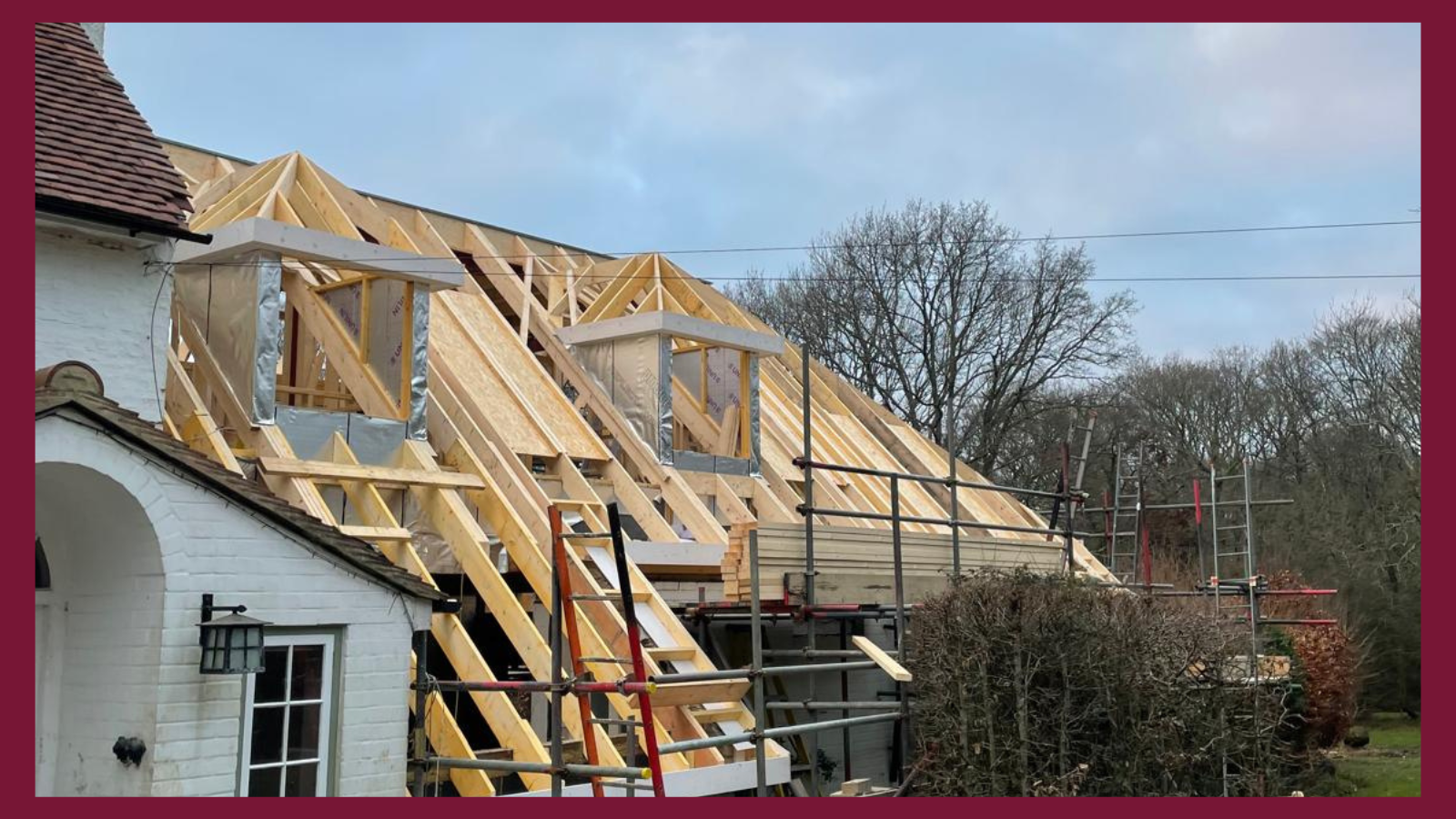Changes to Part L – it’s all getting harder, but Merronbrook’s Timber Frames can help!

Big changes are happening to the way we are required to assess the energy efficiency of houses, with even industry veterans wrong-footed by the scale of the change.
EPC basics
If you want to build a property (or sell or rent one), you must first obtain an Energy Performance Certificate (EPC). The EPC derives mainly from the 1 – 100 score obtained using ‘SAP’ or Standard Assessment Procedure: A score of 92 and above for SAP equals ECP rating A, and so on. Side note – you can actually exceed 100, but that would mean better than using no energy, i.e., energy export.
The SAP rating is based on the fabric efficiency of the external elements of the building, as well as heating, lighting and use of renewable energy technology. Part L of the Building Regulations Approved Documents governs this topic, and it changed recently. There was a grace period where the old system could be used, but this is ending for new projects (details).
The requirement is to have the EPC done, not to achieve a specific rating, but other factors mean a higher rating is what you need. Note that 85% of new-build homes have a rating of A or B, compared to 3% of existing homes. Why this difference?
• A better EPC does pay for itself in reduced energy bills
• EPC definitely affects property value, with B being the new normal for new build
• Rules will tighten further, as a carbon reduction strategy towards Net Zero 2050: if you want to rent out a property, for example, you must have an EPC of at least E, but this will rise to C (2027) and then B (2030).
What do I need to do?
EPCs are completed by an accredited Domestic Energy Assessor, but you shouldn’t view this person adversarially; engage them early, and they will help, working through the options for improving your rating. Prior to doing that, you could go to the download on our site, where documents continue this discussion in more detail. As the papers there explain, heat is lost from a building in three ways:
• Through the building perimeter: the energy assessor actually has some leeway in deciding how to complete calculations, but we have the “U-value” (thermal transmittance) of our panels evaluated independently and, in our experience, assessors either accept our values or make only minor tweaks,
• Through party walls to the house next door: these are “non-assessed”, meaning a U-value isn’t calculated, it’s assumed given the general construction approach, with a value of 0 accepted if you use our fully-filled cavity service,
• Through thermal junctions: this complex calculation is discussed below, but the assessor will calculate the y-value of total linear thermal transmittance using a selection of psi-values (or ψ-values)
What are psi-values?
Picture a double-glazed window, set within an insulated cavity wall. Not much heat will be lost except through the framing material that makes up the four sides of the window perimeter. Those are linear thermal junctions and will see thermal bridging – heat conducting directly through the framing material. Junctions also include the line where a wall meets the floor, ceiling or another wall. They are called linear because the length of each junction, left to right or top to bottom, must be measured.
The old Accredited Construction Details system has been withdrawn and can no longer be used. That approach let you use regulator-determined psi-values that reasonably matched each construction detail involved. The new system does offer default values, both for individual details and for the overall y-value calculation, but they are punitive and likely rule out the EPC rating you want. Instead, you must convince your energy assessor to accept some other psi-value for each detail.
Merronbrook and psi-values
Psi-values are more likely to trip up your EPC than anything else. To help our customers with this, Merronbrook has paid for independent assessors to estimate values for every detail we offer. A full table of these is now available in our downloads section. As well as being a resource for customers, this work has been reassuring for us; we are happy to say that the assessed values are not only consistently higher than old and new defaults, but in many cases are already better than the non-binding future values that the SAP documentation warns may be demanded for new build eventually.
In addition, whereas the old system considered your theoretical energy performance design only, assessors now need photographic evidence from the actual construction to ensure that the as-built energy performance exactly matches what was designed.
Get help
In the downloads section of our website, you will find guides to the three types of heat loss you need to understand (perimeter, party wall, thermal bridging), plus our new digital asset listing the independently-assessed psi-values you can assume and use. As with other aspects of the SAP, the assessor is in charge, but Merronbrook are a known and trusted source of verified, independently certified information, and we expect our psi-values to be accepted in the same way as the U-values we discuss above.
To explore this or other topics in more detail, get in touch here.


